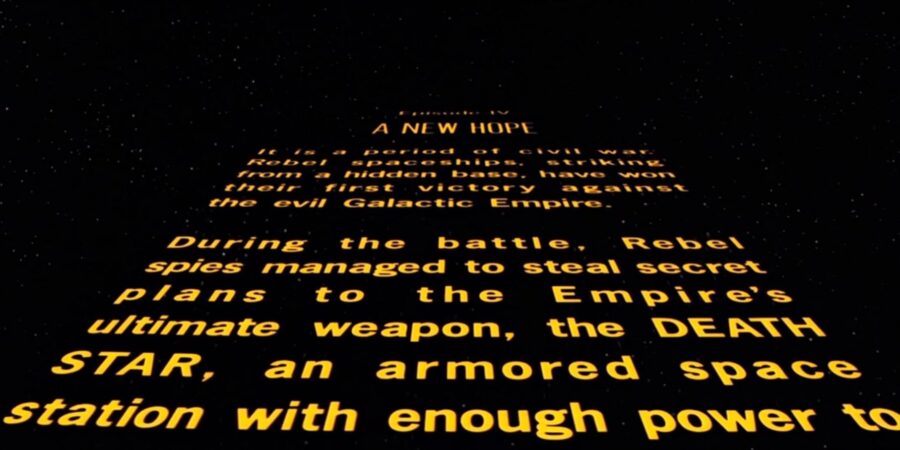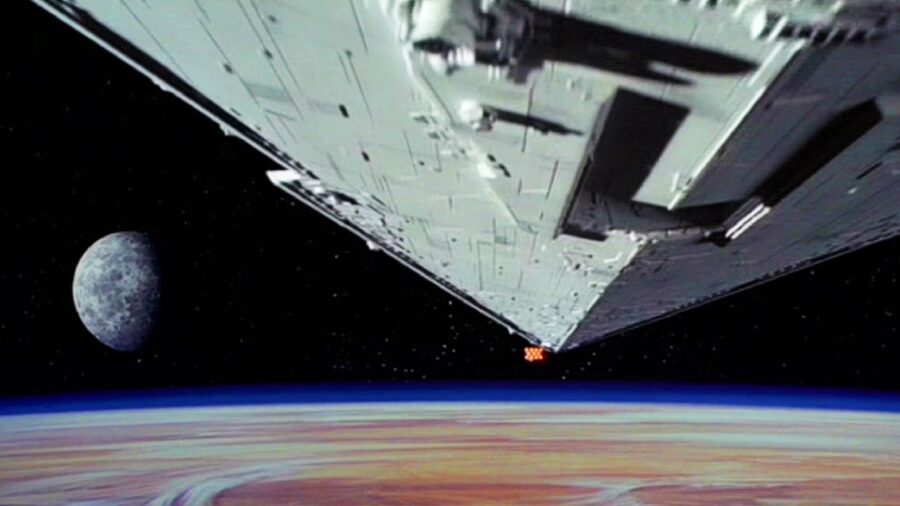How Star Wars Iconic Opening Was Made
The iconic Star Wars crawl in the original film was created with glue and poster board.

The opening of every movie in the Star Wars franchise is synonymous with the phrase, “A long time ago, in a galaxy far, far away…” For decades these words have promised to transport viewers to a place where heroes rise, battles rage, and the forces of good and evil clash. From practical effects to innovative optical techniques, the creation of this opening became a testament to the ingenuity and creativity of the filmmaking team.
When envisioning the opening sequence, Star Wars creator George Lucas sought to capture the essence of classic serials such as Buck Rogers and Flash Gordon while promising the audience a unique story. His ambitious vision set the stage for an opening that captured the imaginations of millions. The iconic Star Wars text crawl was a groundbreaking achievement in its time.
Without the aid of CGI, the Star Wars production team had to rely on practical effects. Lucas worked with graphic designer Dan Perri to develop sketches and prototype mechanical artwork for the opening crawl. They eventually settled on a technique called slit-scan photography in which the crawl was typeset and glued onto black poster board.
The camera was manually moved over the whole thing to create the illusion of the letters moving up the screen. According to Art of The Title, the title “THE STAR WARS” depicted as a three-dimensional logo can be seen in early storyboards drawn by production artist Alex Tavoularis, providing evidence of one of the earliest versions of the opening crawl.

In addition to the opening crawl, the Star Wars films are known for their iconic opening shot of a Star Destroyer passing overhead. To achieve this, George Lucas initially proposed building a massive Star Destroyer, requiring crew members to climb ladders to add intricate details. However, Richard Edlund, the leading special effects cameraman at Industrial Light & Magic, suggested using a smaller model.
Edlund believed it could still deliver the desired impact. Still, the primary concern was that the smaller model might lack the necessary level of detail. To address this, Edlund directed his Star Wars crew to meticulously enhance the 4-foot Star Destroyer, specifically focusing on the underside, which would be prominently featured in the opening shot.
Additionally, he commissioned the construction of a miniature rebel ship, no larger than a cigarette, to complement the scene and add visual interest.
Edlund and his team successfully achieved the desired effect by combining the detailed Star Destroyer model with the tiny rebel ship. The result was a captivating opening shot that immediately immersed audiences in the vast and epic world of Star Wars.
The impact of the Star Wars opening would not have been complete without the masterful composition of John Williams and the meticulous sound design by Ben Burtt.
Williams’ grand and emotive score set the tone for Star Wars, invoking a sense of awe and adventure. Burtt’s artful sound effects, including the iconic hum of lightsabers and the roar of TIE Fighters, heightened the cinematic experience.
In the final stages of production, the opening sequence of Star Wars was carefully edited and polished. The team elevated the visuals to a new level with optical effects and post-production techniques.
Adding a subtle blue glow to the text crawl enhanced its otherworldly presence while seamlessly compositing the starfield (glitter on blackboard) with the moving text, created a captivating visual experience.
These meticulous touches helped solidify Star Wars’ status as a technical marvel and a triumph of practical effects. So it’s not surprising that the opening sequence still manages to evoke feelings of anticipation and wonder in new and seasoned viewers after all this time.











